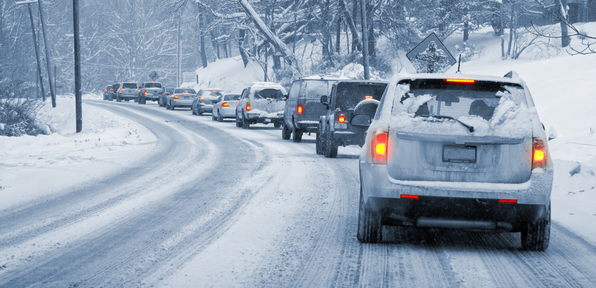As the weather becomes colder and the nights grow darker, driving in the winter can be challenging, even for experienced drivers. We can face anything from snow and ice to strong winds; in these conditions, it is crucial to change how we drive for our safety. Here are our five essential tips for driving in the winter:
1. Prepare before your journey
Before you set off, prepare and plan for your journey carefully. Check the local news and weather updates for information on the weather and plan accordingly. Check your tyre tread as poor tyres will not grip on snow and ice, and if you live somewhere known to have a lot of snow, it may be worth investing in deeper tread tyres. Also, allow for more time than you would normally, as you may have to clear your windows and mirrors, and there also may be delays due to the bad weather.
2. Carry the essentials
When driving in the winter, there are some essentials we should keep in our cars to help us combat the cold weather and dark nights. It is crucial to carry a De-Icer spray and a scraper so we can clear our windshields. We should also have a first aid kit and a fully charged phone for emergencies.
It is also essential to carry a winter emergency kit, as you could be stuck somewhere in bad weather. We suggest packing warm clothes, sturdy footwear, hot drinks and snacks, jump leads, a warning triangle and a shovel.
3. Top up your fuel
It is never a good idea to be careless with how much fuel you have, but in the winter, it is a lot more dangerous. Make sure you keep your fuel topped up so that if you do run low, you aren’t left in the cold.
4. Keep your car ventilated
In the winter, condensation is more likely to occur as there is a change in temperature and more moisture in the air. We must keep our cars well-ventilated to reduce the chance of limited visibility. However, using the heaters on full blast may cause drowsiness. It is essential to keep fresh air coming into the car, so we recommend slightly opening the windows and avoiding the air circulation setting.
5. Keep your distance
On ice and snow, our stopping distance significantly increases. In dry conditions, our stopping distance is usually 2 seconds, but in ice and snow, it can rise to 10 seconds. Therefore, we must reduce our speed and keep a greater distance from the car in front.







